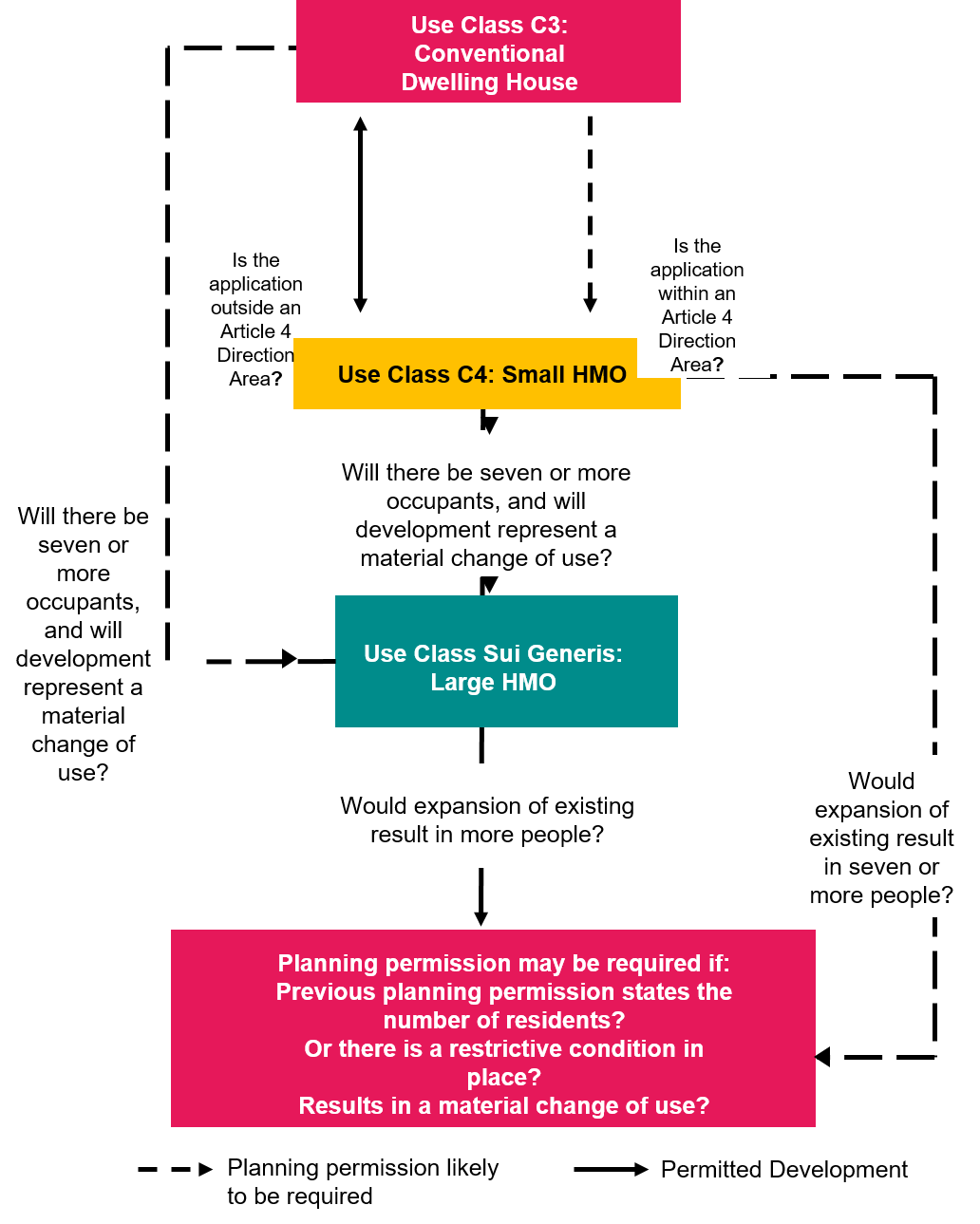Design, amenity and shopfronts supplementary planning document
HMO Standards
Introduction
Houses of Multiple Occupation (HMOs) are properties rented out to at least 3 people who are not from one household (for example, a family) but share facilities like a bathroom or kitchen. Most HMOs are conversions or sub-divisions of larger houses and currently, as of 2024, planning permission is only usually needed for HMOs which will provide a home for 7 or more people.
National Planning Policy and Guidance:
The NPPF sets out that the purpose of the planning system is to contribute to the achievement of sustainable development. One of the three overarching objectives of the NPPF requires the planning system to support strong, vibrant and healthy communities by ensuring that a sufficient number and range of homes can be provided to meet the needs of present and future generations.
Whilst there is no specific reference to HMOs within the NPPF, housing policies do aim to support the Government’s objective of significantly boosting the supply of homes. This requires the council to reflect on provision of the size, type and tenure of housing needed for different groups in the community, including for those who require affordable housing, students, families, and people who rent their homes etc.
The Planning Practice Guidance echoes the content of the NPPF in that it does not provide specific advice on HMOs, however, it does provide guidance on planning for the housing needs of different groups.
Planning context:
In accordance with the Use Class Order (2021) HMOs fall within use class C4, which relates to the ‘Use of a dwellinghouse by 3-6 residents as a ‘house in multiple occupation’
HMOs therefore currently require express planning permission once they exceed 6 people if that change results in a material change in use. Large HMOs, formed from seven unrelated residents or more, become
Sui Generis. Sui Generis is a “class of its own”, and no Permitted Development Right exists to change a HMO with 7 or more residents from any use.
Consequently, for the change of use of any premises to a HMO for 7 or more residents, an assessment has to be made as to whether a material change of use from the prior lawful use has occurred and, if it is determined that it has, then planning permission is required. This is set out further on Figure 42.
Design Considerations
Planning applications relating to new HMOs should ensure that appropriate cycle storage and refuse storage is provided along with ample communal garden areas. All habitable rooms are to have windows with an outlook and light.
The entrance to HMOs should be made from the road only and avoid the use of back entries to access the property and main entrances to buildings and bedrooms should consider measures to address ‘design out crime’.

Figure 42: When does an HMO need planning permission?
Figure 42 When does an HMO need planning permission accessible description
Flowchart with multiple routes, a dashed line arrow indicating planning permission likely to be required and solid arrow indicating permitted development.
Start - use class c3: conventional dwelling house.
- Route 1 - dashed line to Will there be seven or more occupants, and will development represent a material change of use? Line to Use class Sui Generis: Large HMO. Line to Would expansion of existing result in more people? Line to Planning permission may be required if: Previous planning permission states the number of residents? Or there is a restrictive condition in place? Results in a material change of use?
- Route 2 - solid line arrow to Is the application outside an article 4 direction area? solid line to Use class C4: Small HMO. Line to Will there be seven or more occupants, and will development represent a material change of use? Line to Use class Sui Generis: Large HMO. Line to Would expansion of existing result in more people? Line to Planning permission may be required if: Previous planning permission states the number of residents? Or there is a restrictive condition in place? Results in a material change of use?
- Route 3 - dashed line with Is the application within an Article 4 Direction Area? to Use class C4: Small HMO. dashed line to Would expansion of existing result in seven or more people? Line to Planning permission may be required if: Previous planning permission states the number of residents? Or there is a restrictive condition in place? Results in a material change of use?
Let us know your comments
We welcome your comments and feedback. Consultations runs until 5pm Wednesday 8 May 2024.